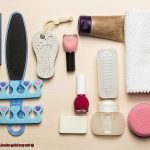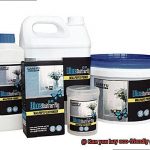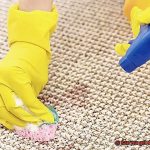Picture this: you set up those sticky traps to deal with those pesky mice, but instead, you find yourself face-to-face with a little mouse, fighting for its freedom. Now you’re left wondering: is there any way to save these furry friends from their gooey prison?
There are actually humane techniques that can help liberate these adorable critters and send them back to where they belong – the great outdoors. In this blog post, we’ll dive headfirst into the world of rescuing mice from glue traps, uncovering expert tips and tricks that will blow your mind. So buckle up and get ready for an adventure filled with compassion and awe. Let’s do this.
The Inhumane Nature of Glue Traps
Contents
- 1 The Inhumane Nature of Glue Traps
- 2 How to Remove a Mouse from a Glue Trap with Care
- 3 Removing a Mouse from a Glue Trap Using Lubricants
- 4 Removing a Mouse from a Glue Trap Using Warm Water
- 5 Potential Risks When Removing Mice from Glue Traps
- 6 Releasing the Trapped Mouse in a Safe Area
- 7 Prevention Tips to Avoid the Need for Glue Traps
- 8 Conclusion
Glue traps may seem like a quick and convenient solution for catching mice and other small pests, but what many people fail to realize is the immense suffering these traps cause. In this article, we will delve into the inhumane nature of glue traps and explore more ethical alternatives for pest control.
When a mouse becomes ensnared in a glue trap, their struggle for freedom often leads to self-inflicted injuries, including broken bones. The sticky adhesive immobilizes them, causing immense discomfort and distress. Trapped mice can suffer for hours or even days before succumbing to dehydration, starvation, or suffocation. This slow and agonizing death raises serious ethical concerns.
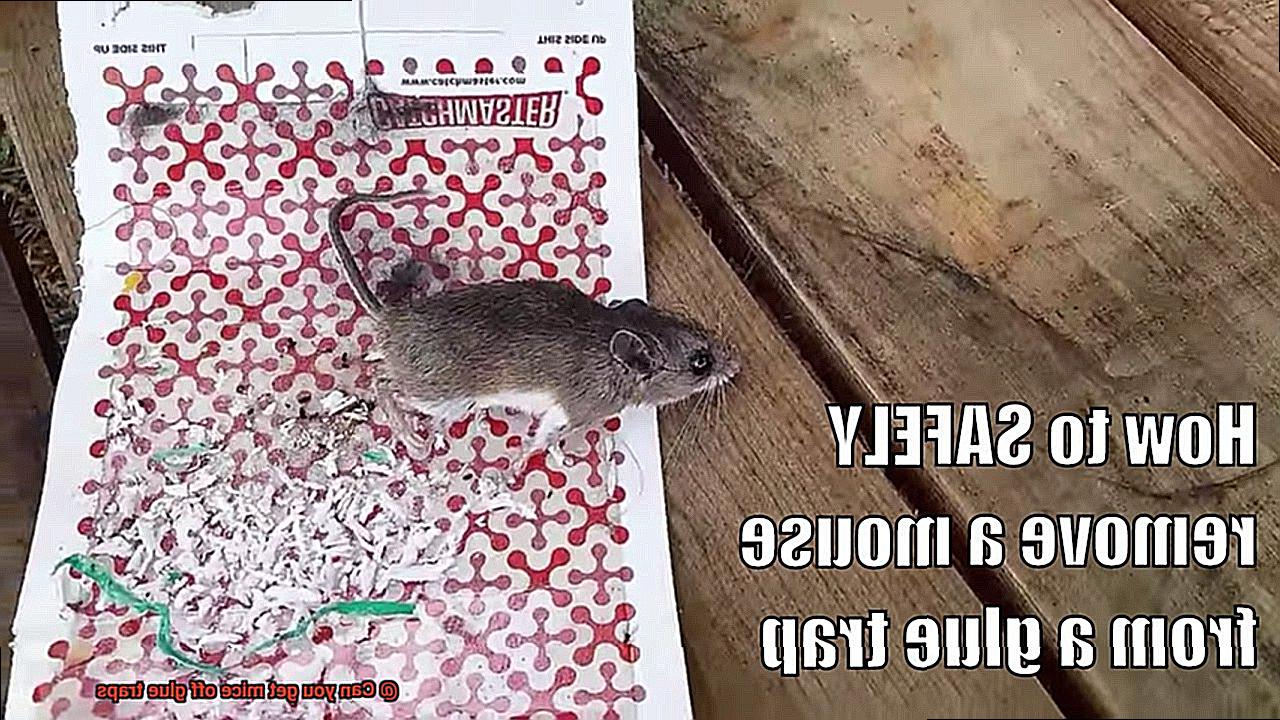
But the cruelty of glue traps doesn’t stop there. These traps do not discriminate between target animals and unintended victims. Birds, insects, and even pets can inadvertently become trapped in these sticky devices. The indiscriminate nature of glue traps further highlights their inhumane effects.
Thankfully, there are more compassionate alternatives available. Live-catch traps provide a humane way to capture mice without causing harm. Once caught, the animals can be released safely outside, away from human habitation.
Prevention is always better than cure when it comes to pest control. By sealing potential entry points, securing food sources, and maintaining cleanliness, you can deter mice from entering your home or building in the first place. These preventive measures help create an environment that is unattractive to mice.
If you find a mouse stuck on a glue trap, it is crucial to prioritize the well-being of the animal. Using a lubricant such as vegetable oil or cooking spray can help loosen the adhesive, making it easier to remove the mouse without causing further harm. Warm water can also be used to soften the glue, allowing for careful peeling of the trap from the mouse’s fur.
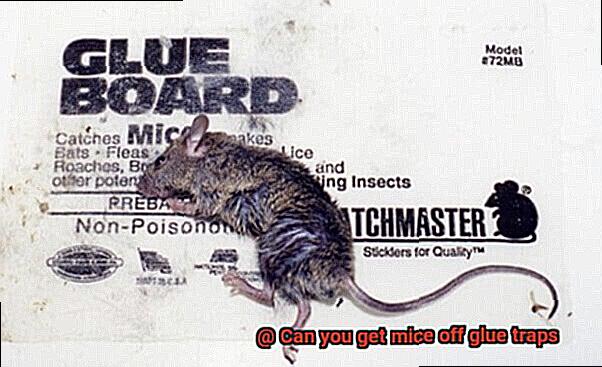
How to Remove a Mouse from a Glue Trap with Care
Glue traps can be a distressing and painful experience for mice. If you find a mouse caught in a glue trap, it’s essential to handle the situation with care and compassion. In this guide, we will provide step-by-step instructions on how to safely remove a mouse from a glue trap, ensuring minimal harm to the animal. Remember, our goal is to help the mouse without causing unnecessary stress or injury.
The Importance of Removing a Mouse with Care:
When a mouse gets caught in a glue trap, it can experience extreme distress and discomfort. By removing the mouse with care, we show empathy towards these little creatures and minimize their suffering. It’s also crucial to remember that ethical treatment of animals is important and promotes kindness in our communities.
Prevention Is Key:
Preventing mice from getting caught in glue traps is the best approach. Seal off entry points, keep food sources inaccessible, and consider using alternative mouse control methods like snap traps or electronic repellents. These preventive measures protect mice from getting trapped and save them from unnecessary pain.
Gather Your Supplies:
Before attempting to remove the mouse, make sure you have everything you need. Put on disposable gloves to protect your hands, gather vegetable oil or cooking oil, a plastic bag or container, and a soft cloth or towel.
Applying Oil to Loosen the Glue:
Apply a generous amount of vegetable oil or cooking oil onto the areas where the mouse is stuck on the glue trap. The oil helps break down the adhesive properties of the glue, making it easier to release the mouse without causing harm.
Lift Slowly and Steadily:
Gently lift one side of the trap using a slow and steady motion. Avoid jerking or pulling abruptly, as this can cause further distress to the mouse. Slowly continue lifting until you can see that the mouse is free from most of the adhesive.
Transfer the Mouse to Safety:
Once you have lifted the trap enough to ensure that the mouse is no longer stuck, carefully slide the soft cloth or towel underneath the mouse’s body. This provides additional support and prevents any potential injuries while transferring it to a safe place.
Removing a Mouse from a Glue Trap Using Lubricants
Glue traps may be a common method for catching mice, but they often inflict unnecessary suffering on these small creatures. Thankfully, there is a humane alternative – using lubricants to release mice from glue traps. In this guide, we will take you through the step-by-step process of safely removing a mouse from a glue trap using lubricants.
Step 1: Gather your materials
- Cooking oil, vegetable oil, or petroleum jelly
- Soft cloth or gloves
- Container for releasing the mouse
Step 2: Apply the lubricant
- Carefully apply a small amount of lubricant to the areas where the mouse is stuck on the trap.
- Be gentle to avoid trapping or further injuring the mouse.
- Ensure that the lubricant covers the adhesive surface of the trap.
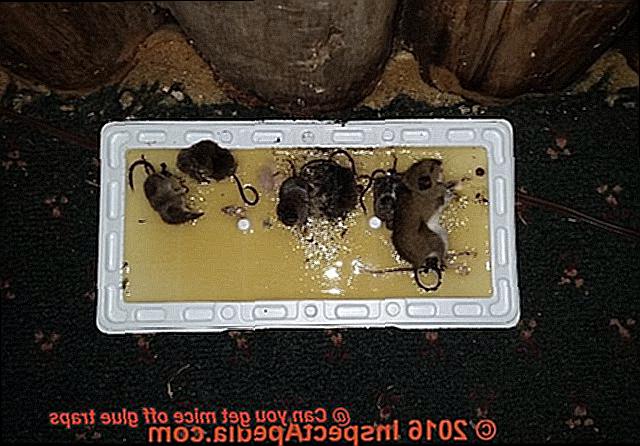
Step 3: Allow time for the lubricant to work
- Give the lubricant some time to break down the adhesive properties of the glue.
- Watch as the mouse starts to wiggle and attempt to free itself from the trap.
Step 4: Lift the mouse off the trap
- After a few minutes, gently try to lift the mouse off the trap using a soft cloth or gloves.
- If the mouse remains stuck, reapply more lubricant and wait a bit longer.
- Remember to be patient and take your time during this process.
Step 5: Handle the mouse with care
- Once the mouse is freed from the trap, handle it properly to avoid bites or scratches.
- Use gloves or a cloth to prevent direct contact with the mouse.
Step 6: Release the mouse in a safe area
- Take the mouse outside and release it in a secure location away from your home.
- Ensure that it has access to shelter and food sources for its survival.

Removing a Mouse from a Glue Trap Using Warm Water
Removing a Mouse from a Glue Trap Using Warm Water
Glue traps can be a cruel and distressing method of capturing mice. The trapped animals often experience fear and pain as they struggle to break free from the sticky surface. Fortunately, there is a more humane way to remove a mouse from a glue trap using warm water.
To begin, gather the following materials:
- A basin or bucket
- Warm water (not too hot)
- Disposable gloves or tongs
- A safe and secure container for the mouse (e.g., cardboard box with ventilation holes or a small cage)
Now, follow these steps:
- Fill the basin or bucket with warm water. Ensure that the water is not too hot, as this could scald the mouse.
- Carefully place the glue trap with the trapped mouse into the warm water, ensuring that the entire trap is submerged. Allow it to soak for approximately 10 to 15 minutes.
- During this time, the warmth of the water will gradually soften the glue, making it easier to free the mouse without causing harm.
- After soaking, put on disposable gloves or use tongs to gently lift the trap out of the water. Be cautious not to touch the glue surface directly, as it may stick to your gloves or tongs.
- Slowly and carefully peel back the edges of the trap, working your way towards the mouse. Take your time and be patient to avoid injuring or causing unnecessary stress to the animal.
- As you peel back the trap, you may notice that some fur or skin may come off with it. Do not panic; this is a common occurrence and should not cause harm as long as you are gentle and cautious.
- Once the mouse has been fully released from the trap, place it in a safe and secure container, such as a cardboard box with ventilation holes or a small cage.
- Provide some food and water for the mouse, as it may be stressed and in need of sustenance. Avoid using sticky or adhesive substances as food containers, as these may retraumatize the mouse.
- It is crucial to release the mouse back into its natural habitat as soon as possible. Choose a suitable outdoor location away from human dwellings, where the mouse can find shelter and food.
- If you are unable to release the mouse outdoors, consider contacting a local animal rescue organization or wildlife rehabilitation center for assistance.
- After successfully freeing the mouse, it’s important to clean and dispose of the glue trap properly. Place the trap in a sealed bag and throw it away in an appropriate trash bin.
- To prevent future incidents, it is recommended to use alternative methods for pest control that are more humane and less harmful to wildlife, such as snap traps or ultrasonic devices.
Potential Risks When Removing Mice from Glue Traps
Glue traps are commonly used to catch mice, but what many people fail to consider are the potential risks involved when attempting to remove the trapped mice. In this blog post, we will explore the various risks associated with this process and discuss the importance of taking a humane approach to ensure the safety and well-being of both humans and mice.
Physical Harm:
Glue traps are designed to immobilize mice, rendering them helpless and making it challenging to remove them without causing harm. The adhesive surface can cause limb injuries, leading to painful twists and turns that result in fur loss and skin damage. Imagine the agony of a mouse struggling to escape, its delicate limbs stuck in a sticky prison.
Stress and Trauma:
Glue traps induce high levels of stress in mice, as they find themselves trapped in a seemingly inescapable situation. The mere act of attempting to remove a trapped mouse can escalate its agitation, increasing stress levels for both the mouse and the person trying to free it. It’s a heart-wrenching sight – a creature struggling against its bonds, fear and panic etched on its face.
Risk of Death:
Improper handling during removal can cause severe physical stress and trauma that may lead to shock or even death for the mouse. With their delicate respiratory systems, sudden or forceful movements can spell disaster.
Imagine the silent gasps for air, the desperate fluttering of a tiny heart on the brink of failure.
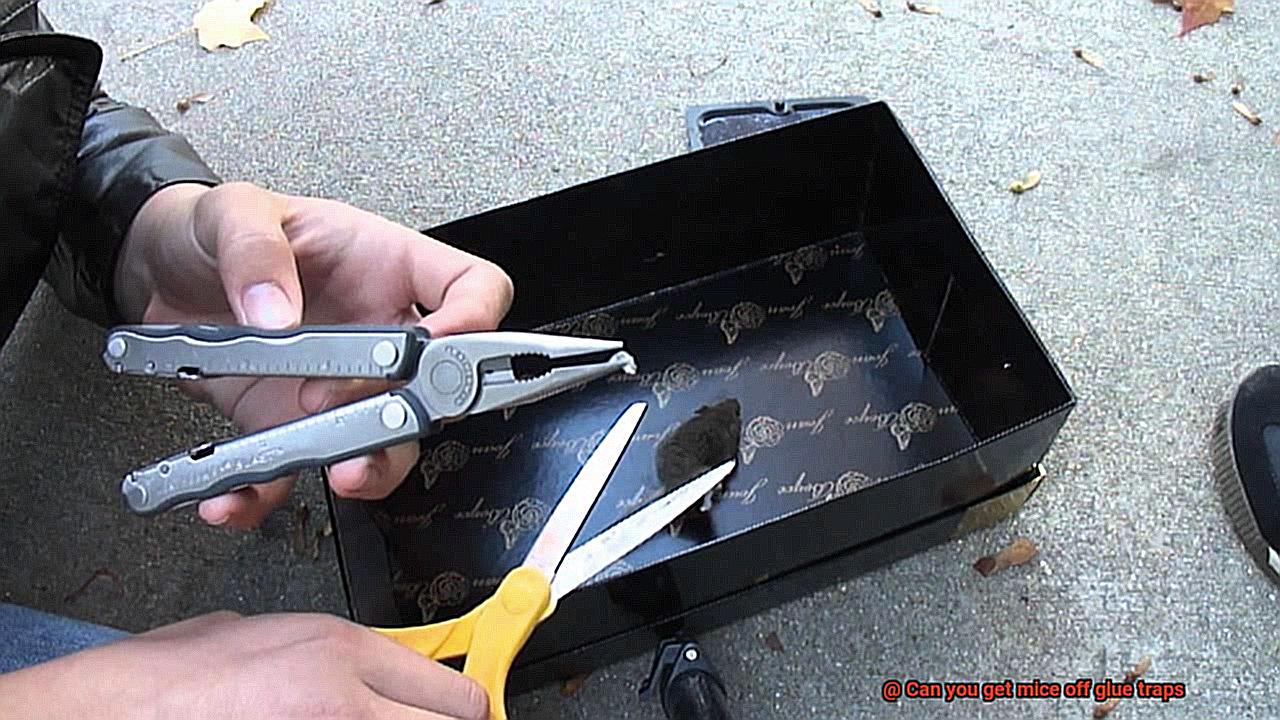
Disease Transmission:
Mice are notorious carriers of pathogens and parasites such as bacteria, viruses, fleas, ticks, and mites. Handling a trapped mouse without proper precautions can expose individuals to these disease-causing agents.
One wrong move, one accidental touch, and you risk inviting these invisible threats into your life.
Personal Safety and Hygiene:
Glue traps are typically placed in areas where mice are considered pests, which may have additional hazards like electrical wires or toxic substances. Vigilance and caution are paramount when handling glue traps to prevent accidents or exposure to harmful substances. A momentary lapse in attention could result in an unintended shock or a dangerous encounter with a hazardous substance.
Releasing the Trapped Mouse in a Safe Area
Glue traps, commonly used to catch mice, often unintentionally trap these small creatures, causing them immense suffering. To prevent unnecessary harm and promote compassion, it is essential to release the trapped mouse in a safe and humane manner. In this informative blog post, we will guide you through the process of safely releasing a trapped mouse and providing it with a suitable habitat for survival.
Approach with Care:
To ensure the mouse’s well-being, approach the situation calmly and without causing any further harm.
Use protective gloves or a plastic bag to handle the trap, avoiding direct contact with the mouse or the glue.
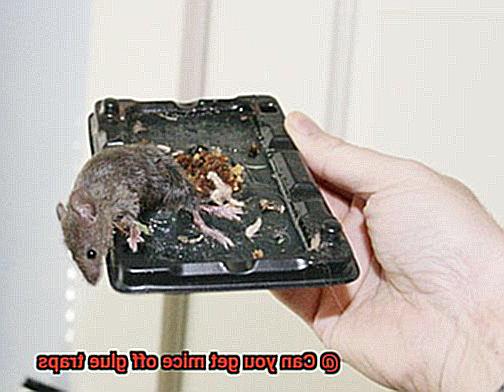
Finding the Perfect Release Area:
- Choose a location far away from your home or any other buildings to prevent the mouse from returning indoors.
- Ensure the area has ample food and water sources for the mouse’s survival.
Assisting in Freeing the Mouse:
Observe the mouse’s movements on the trap; if it appears distressed or struggling, provide assistance.
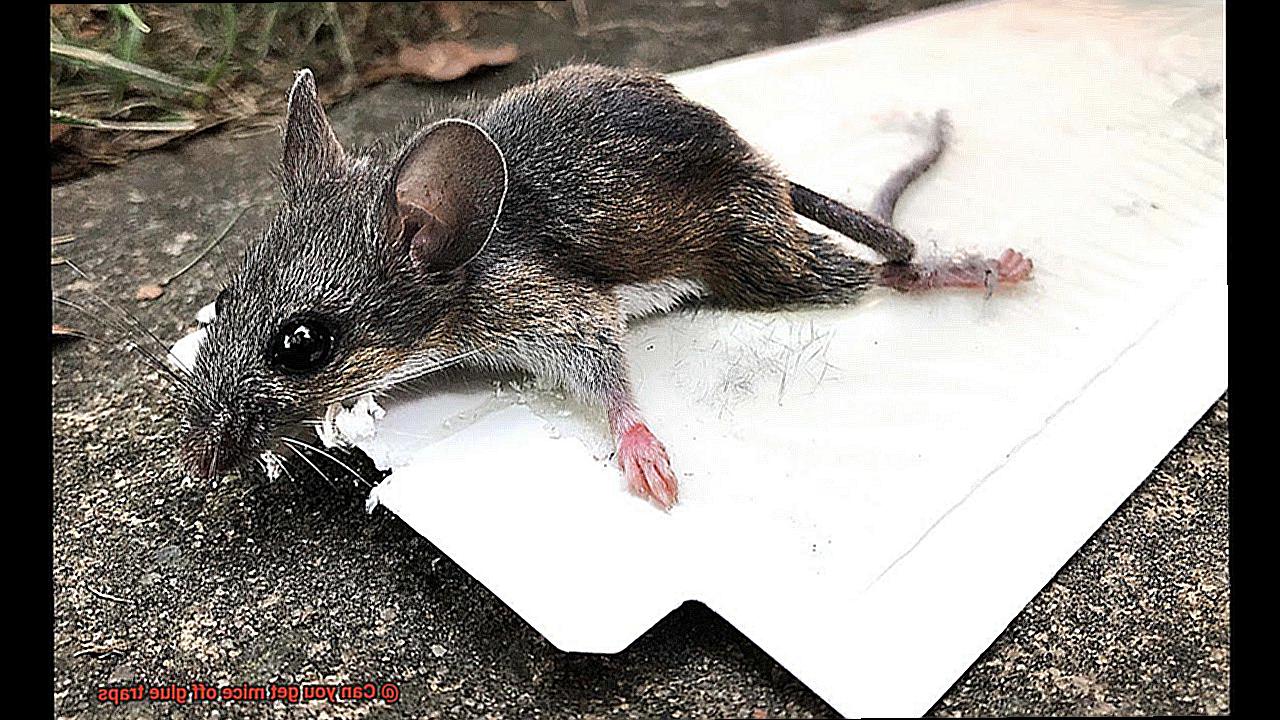
- Apply a non-toxic oil or lubricant around the edges of the trap where the mouse is stuck, using vegetable oil or cooking spray.
- Allow some time for the oil to penetrate the glue and gently lift one edge of the mouse’s body off the trap using a spatula or similar tool.
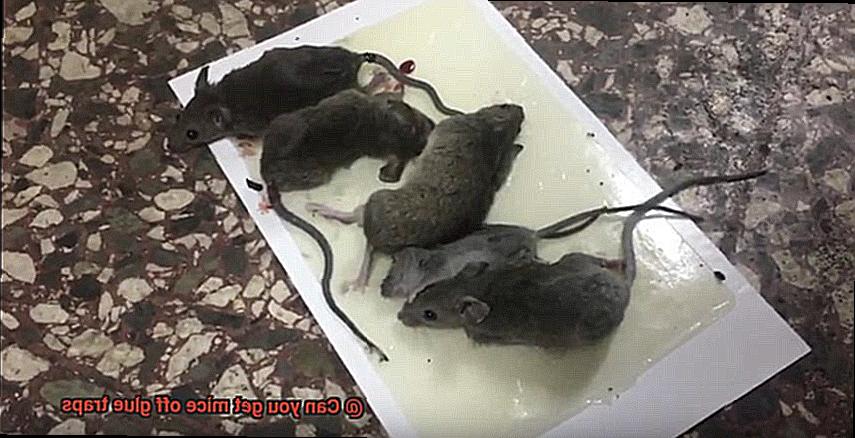
Providing Temporary Shelter:
- After freeing the mouse from the glue trap, create a temporary shelter using a small cardboard box with air holes and soft bedding material.
- Place the box in a quiet area away from predators and disturbances.
Food and Water:
- Offer fresh water and easily accessible food such as seeds, nuts, or small pieces of fruit inside the temporary shelter.
- Monitor the mouse’s behavior and adjust food and water as needed.
Release Back into the Wild:
- Once the mouse has rested and recovered, choose an appropriate location such as an open field or wooded area for release.
- Open the temporary shelter near this location and allow the mouse to exit on its own terms, avoiding any handling or forcing.
Prevention Tips to Avoid the Need for Glue Traps
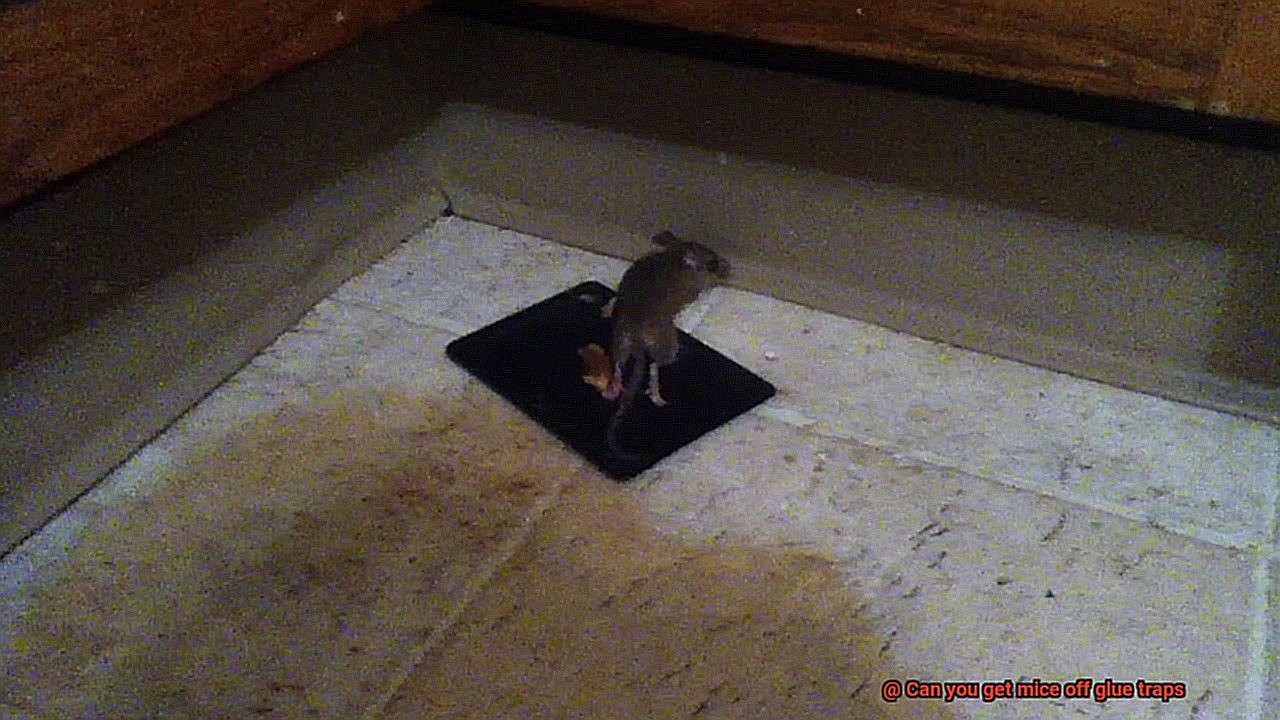
Mice can be pesky little critters that find their way into our homes, but there are ways to prevent them from entering in the first place. By following these prevention tips, you can avoid the need for glue traps and keep your home mouse-free.
Seal Entry Points
Mice are notorious for squeezing through tiny gaps and cracks, so it’s important to seal any openings in your walls, floors, windows, and doors. Use caulk or steel wool to fill these gaps and keep mice out. Don’t forget to check for holes around pipes or cables that enter your home as well. By sealing off these entry points, you create a strong barrier that mice cannot penetrate.
Keep Food Sealed
Mice love food, so it’s crucial to store all food in airtight containers made of glass or metal. Mice can easily chew through plastic or cardboard packaging, so these should be avoided. Clean up spills and crumbs right away, as even the tiniest morsel can attract mice. Don’t forget about pet food either – make sure to store it in sealed containers and don’t leave it out overnight.
Maintain Cleanliness
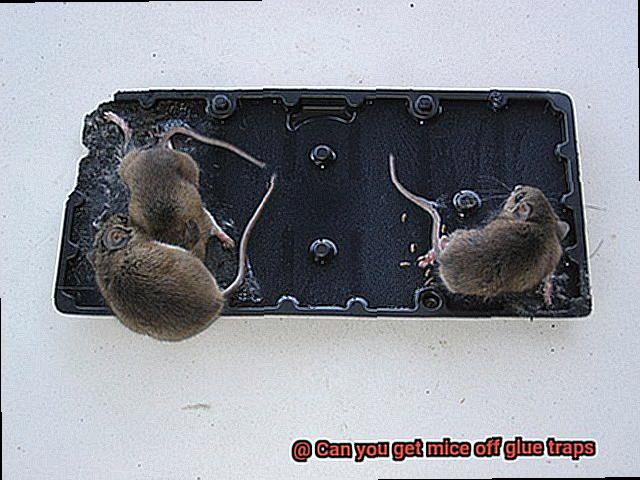
Regularly cleaning your home is essential in preventing mice infestations. Pay special attention to areas where food is prepared or consumed. Sweep and vacuum floors to remove any food particles that might attract mice. Wipe down countertops and tables to ensure there are no lingering crumbs. By maintaining cleanliness, you eliminate potential food sources for mice and make your home less enticing to them.
Remove Clutter
Mice love cluttered areas where they can hide and build nests. Get rid of unnecessary clutter like stacks of newspapers or cardboard boxes. Keep storage areas organized and elevate items off the floor. By decluttering your home, you eliminate hiding spots for mice and make it more difficult for them to establish a presence.
Trim Vegetation
Mice can use overhanging branches or shrubs near your home as a bridge to get inside. Trim any vegetation that is close to your house to make it harder for mice to enter. By maintaining a clear perimeter around your home, you create an additional barrier that mice have to overcome. This simple step can greatly reduce the chances of mice finding their way into your home.
ob2ivzjuYJM” >
Conclusion
In conclusion, the use of glue traps to catch mice is not only cruel but also poses dangers for both the trapped animals and those attempting to free them. These traps inflict immense suffering, causing injuries and an agonizingly slow demise for the unfortunate mice. Not only that, but they also trap unintended victims like birds, insects, and even beloved pets.
Thankfully, there are kinder alternatives available. Live-catch traps offer a humane way to capture mice without causing harm. Prevention is also key in effective pest control. By sealing potential entry points, securing food sources, and maintaining cleanliness, you can discourage mice from infiltrating your home or building in the first place.
Should you find a mouse ensnared on a glue trap, it is vital to prioritize the animal’s well-being above all else. Utilizing lubricants such as vegetable oil or cooking spray can help loosen the adhesive and facilitate safe removal of the mouse without further harm. Warm water can also be employed to soften the glue and gently peel off the trap from the mouse’s fur.
Remember that handling trapped mice with utmost care is crucial to minimize their stress and potential injuries. Once liberated from their sticky prison, release them in a secure location far away from human settlements.
Ultimately, it is imperative to opt for compassionate methods of pest control that value all creatures’ welfare while minimizing harm.



